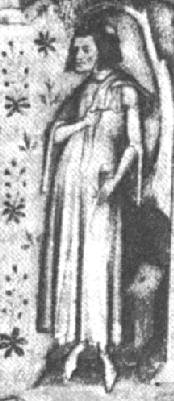Introduction
(born ?Reims, circa 1300; died there, ?13 April 1377).
Probably educated in Reims, he entered the service of John of Luxembourg,
King of Bohemia, as a royal secretary, circa 1323. The king helped him
to procure a canonry in Reims, which was confirmed in 1335; Machaut settled
there circa 1340, although he continued in royal service until the king's
death (1346). He then served various members of the French high nobiIity,
including John, Duke of Berry, his later years being dedicated to the manuscript
compilation of his works.
With his prolific output of motets and songs, Machaut was the single
most important figure of the French Ars Nova. He followed and developed
the guidelines of Philippe de Vitry's treatise Ars nova and, in
particular, observed Vitry's unprecedented advocation of duple time in
many of his works, even in his setting of the Ordinary of the Mass. Only
in some of his lais and virelais and the Hoquetus David did he consistently
adhere to 13th-century rhythmic patterns and genres. His own rhythmic style
is novel in its use of variety and motivic interest, particularly through
syncopation, and in his development of isorhythmic techniques (which he
often extended to all voices): all but three of his 23 motets, and four
of the movements of the Messe de Nostre Dame, are isorhythmic. The
mass is one of the earliest polyphonic settings of the Mass Ordinary; the
four isorhythmic movements are based on Gregorian tenors, while the Gloria
and Credo are freely constructed. In secular music, Machaut set a wide
range of poetic forms, all of which are illustrated in his long narrative
poem, the Remede de Fortune (probably an early work). While the
relationship between text and music is most closely observed in the monophonic
lais and virelais, a highly flexible approach is adopted in the three-voice
motets so that the subtle treatment of the text avoids the symmetricality
of complete isorhythm. His inventive approach to isorhythm resulted in
freely-constructed introductions to five of his Latin motets. More progressive
features of Machaut's style - an increased awareness of tonality, the use
of unifying rhythmic motifs - are found in his polyphonic settings of rondeaux
and ballades, while melodic considerations are to the fore in his virelais.
Typical of Machaut's compositional flair and imagination is the rondeau
Ma
fin est mon commencement in which the text provides the key to an ingenious
canon.
Extracted with permission from
The Grove Concise Dictionary of Music
edited by Stanley Sadie
© Macmillan Press Ltd., London. |
Detailed Information about
-
Messe de Nostre Dame
-
Picture Gallery
-
List of Works
-
Bibliography
can be found on the internet on:
Classical Music Pages:  |
This project was created by Matt Boynick.
© 1 February 1996
Last Revision - 25 August 1999
|

